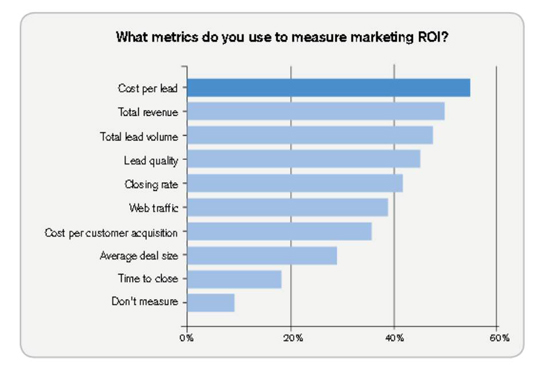Everyone works for an organization that is at one level or another involved with a lead generation strategy. Some of your companies may be brand new and not yet active on social channels; others might have some lead generation campaigns in place, but not a complete strategy. Your wish list very much depends on where you are currently in your lead generation journey.
One important thing to note before you start mapping out your sales plan is to think big, start small, and act quickly! Consider your best-case scenario, your ultimate wish list, and then just start chipping away at it. Move quickly. Don’t sit around waiting for everything to be aligned perfectly. You need to try each lead generation tactic and strategy in order to iterate and be successful.
It is critical to establish your goals and return on investment estimates up front for each lead generation campaign. All too often, marketers plan programs and commit their budgets without establishing any concrete set of expectations for the program outcome. This becomes extremely problematic and is another reason that the usefulness of marketing often gets questioned. The solution to this issue is to set upfront goals for each of your campaigns. Setting goals for individual programs and channels enables you to establish targets to compare results, in addition to creating “what if” scenarios to see how changing your parameters may vary the results. Remember: Design all programs to be measureable.
The best way to lay out your goal metrics is to create a worksheet listing overall goals for lead generation and then goals for each individual channel for which you intend to spend time developing a strategy.
Here are some common conversion metrics that lead generation marketers often track:
Marketing percentage of contribution to sales pipeline: This is the percentage of revenue in the sales pipeline (opportunities) that originated from marketing efforts.
Marketing percentage of contribution to closed revenue: This metric is the percentage of closed and won deals that originated from marketing efforts — who becomes a customer?
Quantity of sales-qualified leads (SQLs): This number signifies the amount of SQLs that your marketing team sends over to sales. These are leads that sales deems good and potentially sales-ready. In some places, this means when the sales department moves an opportunity to a next stage along the funnel.
Quality of SQLs: This is the total percentage of SQLs not rejected by sales. Remember the focus on quality over quantity because this metric is an important one.
Cost per inquiry: This number is the total lead acquisition cost divided by the total number of inquiries.
Cost per lead: This is determined by dividing your total campaign cost by quantity of leads acquired through that campaign.
Inquiry to marketing qualified lead (MQL): This is the percentage of conversion from initial inquiry to MQL. A MQL is defined by a lead that marketing deems qualified to push to the inside sales team, based on specific, predetermined criteria.
MQL to sales accepted lead (SAL): This is the conversion from MQL to SAL. A SAL is defined by a lead that sales accepts but may not have qualified that lead yet.
SQL to opportunity: This defines how many SQLs move to opportunities, which are defined by leads that are sales-ready and being actively pursued by sales.
There are of course a whole slew of additional metrics you might want to track, including website traffic increase, follower increases on social channels, form fill-out and subscriber opt-in rates, and so on.
Take a look at the following figure for a chart from a recent survey that IDG Enterprises and the B2B Technology Marketing Community conducted on marketing trends in lead generation to see some of the most common metrics that lead generation marketers are looking at today.

After you have determined what overall goals you plan on measuring, you can dig deeper into each channel to define what some of your high-level metrics might be in each area. For instance, you might lay out your goals for social media as an increased number of followers, more social shares, more re-tweets, and so on. This will be very specific based on your business priorities.
As part of the planning process when you determine your strategy, answer the following three questions:
What will you measure?
When will you measure it?
How will you measure it?
You need to take specific steps to make all of your programs measureable. This might also include setting up various test and control groups to measure impact and iterate based on results.

